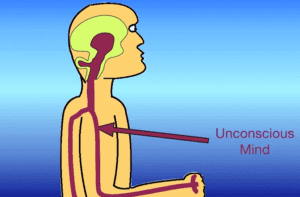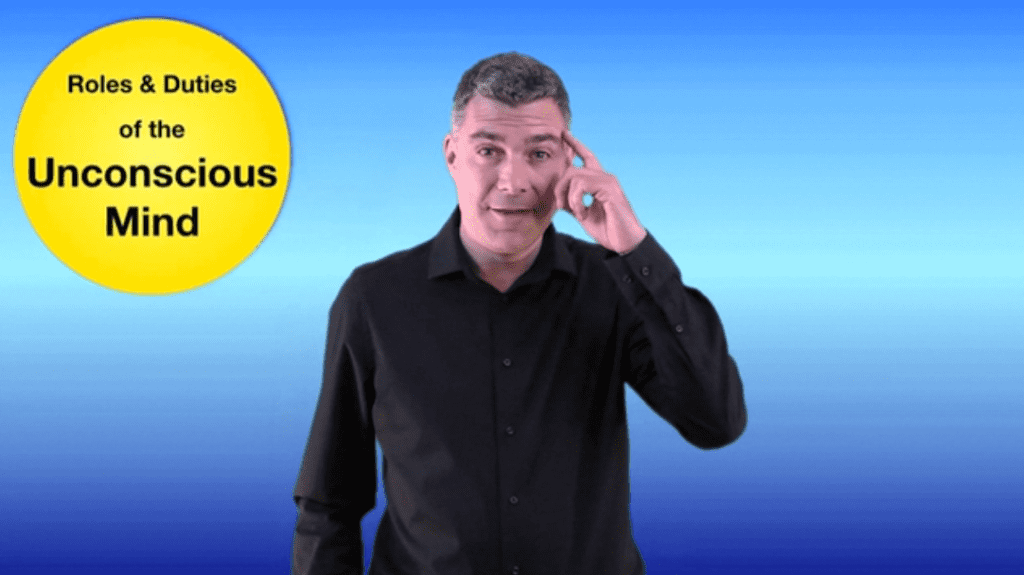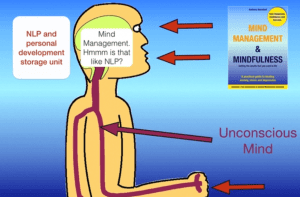Getting to know your unconscious mind is one of the keys to personal development. Rapport between conscious and unconscious aspects to our brains is pivotal to happiness and success in life. Often, problems occur when the two parts of the mind are out of rapport (out of synch). We don’t often discuss things that are not tangible, and the unconscious part of the brain definitely isn’t tangible, you can’t really tell what where it begins and where it ends.
In this series of blogs I am going to reveal some of the hidden secrets to creating peace of mind, inner congruence and how to gain better understanding of some of the deeper aspects to our brains. We are going to take the mask off your unconscious mind so that you can better understand your thinking and how that impacts on your behaviour.
What is the Unconscious Mind?
I am sure that you are more familiar with your conscious mind than you are with your unconscious mind. Of course the conscious mind is where awareness lives, so that makes sense. We can however bring what is unconscious into the light of awareness in order to make improvements.
Notice now the feeling of your left foot, what is it doing? Is it resting on the floor, sofa or relaxing gently in the air? You were not aware of your left foot before I mentioned it, were you? Not consciously anyway. By bringing your attention to it you were able to bring it into your awareness and notice how it feels. You are then able to change the position of the foot, the weight that you are placing on it in order to make it feel more comfortable. This is the approach that we will assist you in taking so that you are able to make positive changes throughout your life. Sounds simple, doesn’t it? Well, that is because it is!
Your unconscious mind works with patterns and symbols
 The unconscious mind keeps things as simple as possible, remember, flight or fight, breathing, healing, survival. It recognises patterns and symbols from the information and data that it receives via our senses. So, you smell something, smell the air around y
The unconscious mind keeps things as simple as possible, remember, flight or fight, breathing, healing, survival. It recognises patterns and symbols from the information and data that it receives via our senses. So, you smell something, smell the air around y
ou now, what do you smell? What does that smell remind you of? Chance are that you are in a familiar environment, so you may have to pay careful attention to the smells around you at the moment. Can you smell your clothing? Any food smells? Can you smell any plants around you? Anything else? If you can smell your clothing, does it smell of washing powder, or can you smell the fabric?
How do you know specifically that it is that particular thing that you can smell? You know the smell of wool, don’t you? If you smell wool then how do you know that it is wool? You must know that it is wool because you have smelled it before and learned to label that smell as wool. In fact you have probably had quite a few instances when you have smelled wool, so you have involuntarily programmed your unconscious mind to recognise that smell and to associate it with wool. Your unconscious mind processes various smells at any one time and when it notices the patterns in the smells as the same as those that you previously labelled wool, it notifies the conscious mind that the smell is “wool”. This is a really useful asset since it obviously saves you the time of finding a new label for everything all the time!
Thinking on a different level. The grand masters of chess are able to use this same process to their advantage in games of chess. They recognise patterns in the order and sequence of chess pieces on the chess board to enable them to predict what they need to do to give them a successful outcome in that game, what moves to make and in which order to bring about a win. They do not need consciously to think through every combination of possible moves, they just use their knowledge stored unconsciously to predict intuitively what they need to do. Based on past games of chess that they have experienced they have built up a huge volume of patterns and sequences at the unconscious level associated with chess moves, and so their unconscious mind relates the current game patterns to similar patterns from the past to let them “instinctively” and intuitively know the right move to make.
In the same way elite tennis players are able to predict where a ball is going to go based on the patterns that their unconscious mind picks up from seeing the movements of the other player and how they toss the ball on their serve.
Our dreams are unconscious too. We don’t consciously construct our dreams but often when we dream we dream sequences of thoughts, pictures, sounds and feelings that reflect certain things that may be going on in our lives. This is our unconscious mind at work. Many years after I left my last place of employment, having not thought about that environment for some time I met an ex-colleague for a chat. We didn’t talk about the past, we were chatting about our present lives and work and about what we were planning for the future, however that night I dreamed about going back to work for that old employer and woke up in a cold sweat! That was my unconscious mind at work, recognising patterns and symbols from the present, relating them to the past and representing them to me in the form of my dreams.
 Most of our learning is unconscious.
Most of our learning is unconscious.
We take in information consciously, through our senses: we read, we watch videos, we listen to audios. We process the information using our unconscious mind. When we read something new our unconscious mind tries to enable us to make sense of it by relating it to something that we are familiar with. It tries to spot patterns in the information that it recognises and when it sees one, it says to itself, “ah, I see, this is similar to …..” and it communicates this to our conscious mind to seek approval and confirmation. This is why it is easier to retain information on a subject where you have some previous knowledge of that subject or a similar one. The unconscious mind is easily able to recognise the patterns and store them alongside the other similar things. When you read or learn something that is completely new to you then it may take several reviews before you are able to recall that information and relate it to other pieces of knowledge as the unconscious mind struggles to find comparable patterns and symbols.
Think of children’s toys where you match shapes to holes and put the shape through the related hole. This is programming our unconscious mind to recognise the shapes. After doing this for a while as a child we become able to do it without thinking until we come across a shape or hole that we do not recognise. Then we will have to sit and think about it for a bit and maybe experiment placing the shape near various holes until we find the matching hole.
Interested in learning more about the unconscious mind? Take one of our NLP training courses where we discuss this aspect in detail and show you how you can create change using tools and techniques involving your unconscious mind.


 Most of our learning is unconscious.
Most of our learning is unconscious.